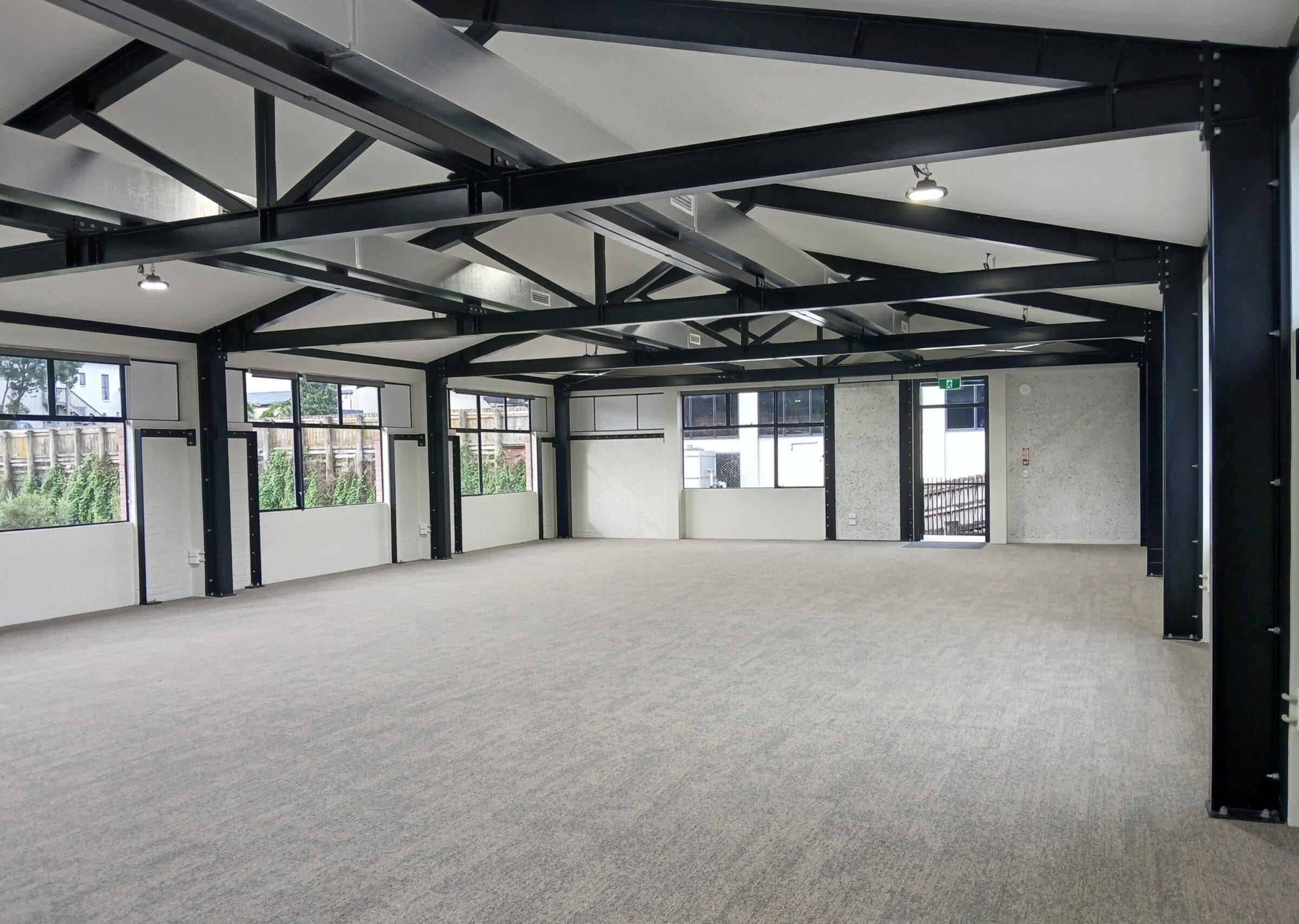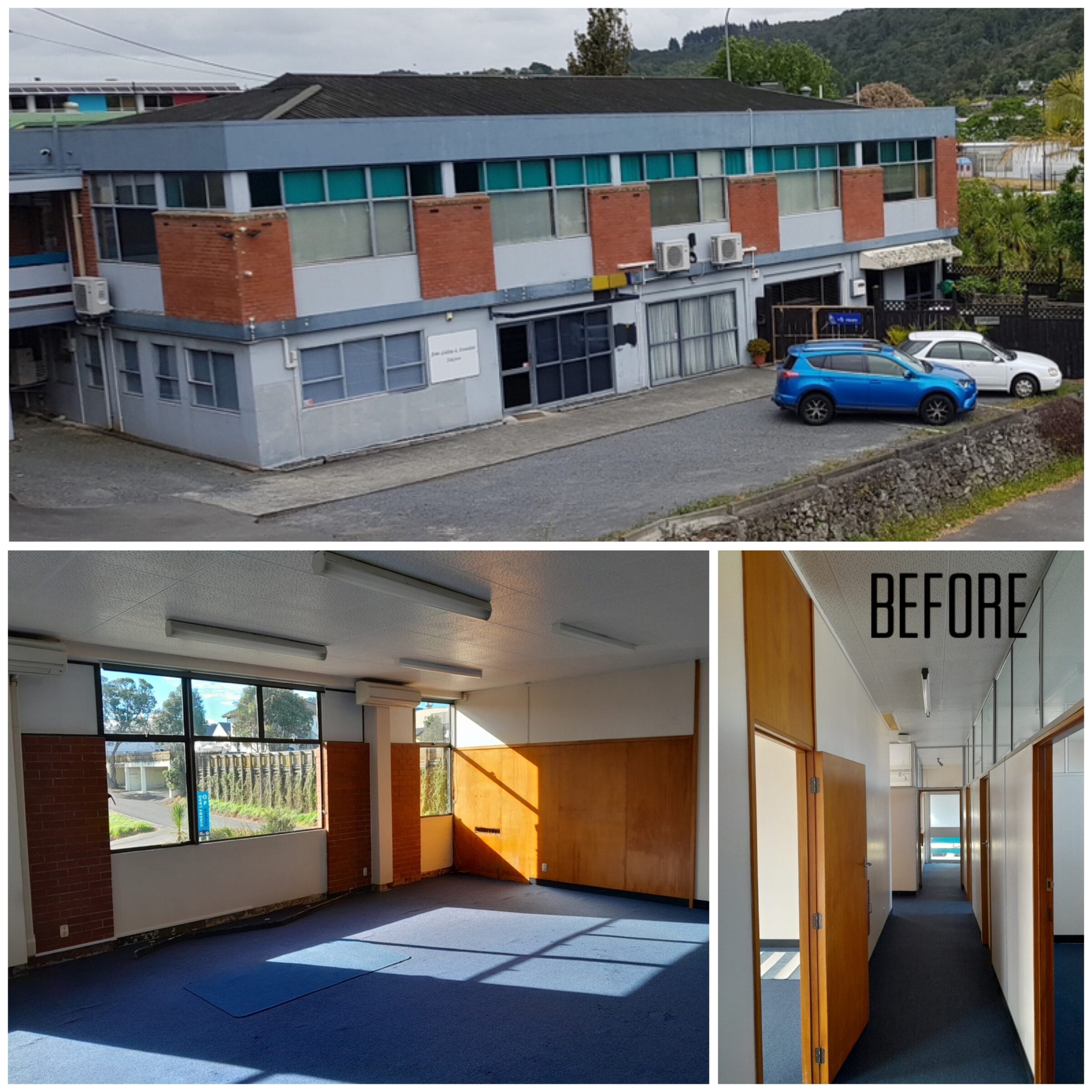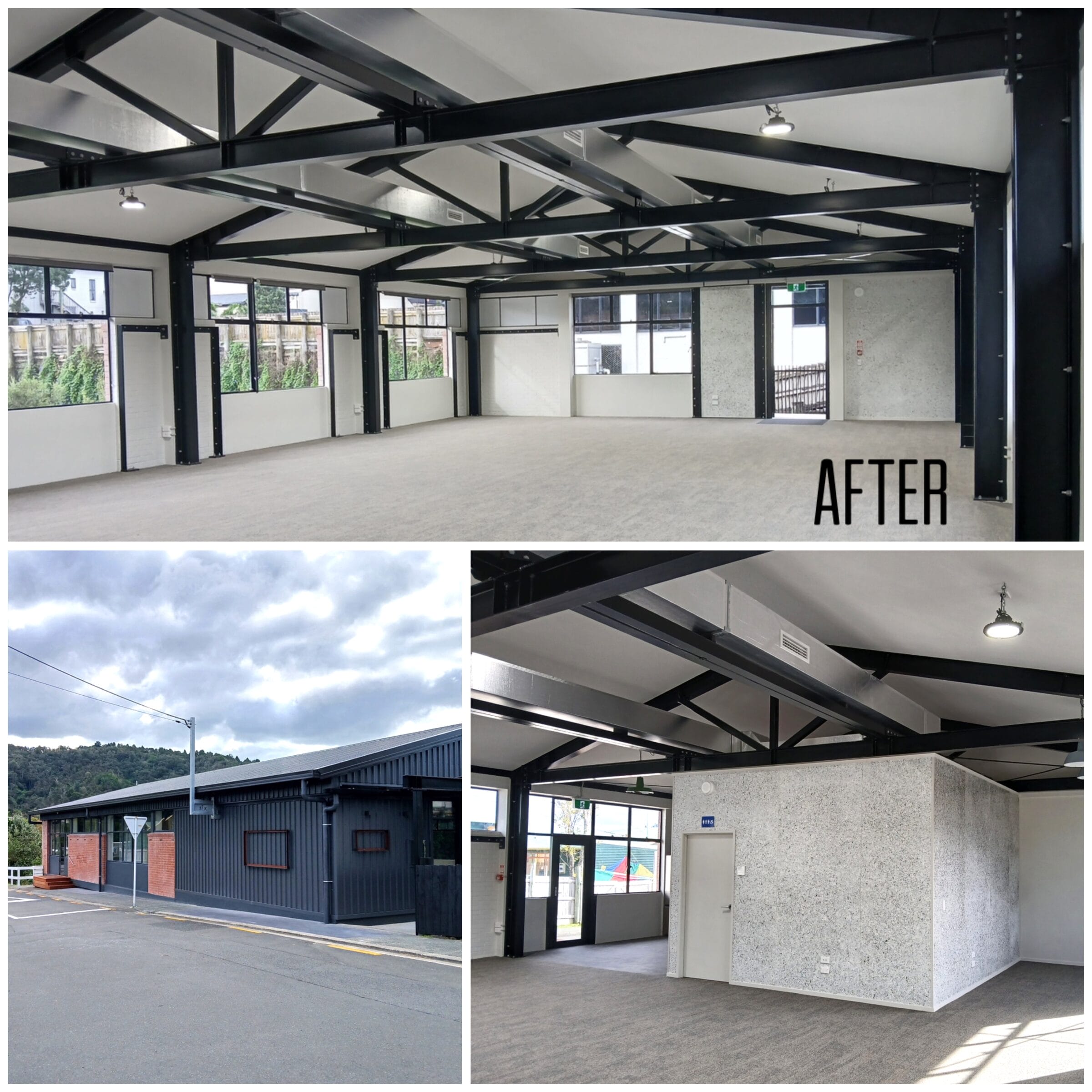

Vinery Lane: From Tired Shed to Sustainable, Industrial Office Space
Breathing New Life into a 1960s Icon
Originally built in 1965 for the Livestock Improvement Corporation, Vinery Lane had strong structural bones but was showing clear signs of age. The roof was leaking, fourteen mismatched air-conditioning units struggled to function together, and the courtyard was well past its prime.
In 2025, the transformation is complete. Vinery Lane is now a light-filled industrial workspace that honours its heritage while embracing a bold new future.
Raw Character Meets Modern Functionality
The revitalised space features exposed steel trusses, bagged brickwork, and vintage Bali lighting repurposed with care. These elements give the interior texture and authenticity while supporting a contemporary, functional layout.
Spaceworks joined the project early to assist with space planning and to shape the initial design direction. From the start, it was clear that the building was ready to reveal its hidden charm. Stripped-back ceilings and structural elements helped tell that story.
A Design-Led Vision with Structural Ambition
What began as a design-led exercise grew into a full-scale structural upgrade. The original trusses, which helped define the building’s identity, became the catalyst for seismic strengthening. This included a new roof and major steelwork to ensure the building would be safe and resilient for the future.
Project leads Pete Gregory and Jules Smith were focused on opening up the floorplate, enhancing natural light, and creating flexible spaces that could evolve over time. Early sketches showed an ambitious vision that has now been brought to life with impressive accuracy.
Sustainability at the Core
Spaceworks’ role was primarily in the early design phase, but sustainability was embedded throughout the entire project. With New Zealand’s construction sector sending around 17,000 tonnes of waste to landfill every day, the team was determined to do things differently.
Pete Gregory explains:
“It’s been really satisfying to have the luxury of time and space to sort, store, and recycle or reuse demolition waste. It’s been so good for the wairua (and the project budget) to not line up jumbo bins and landfill everything. We even found a home for the 3m³ of mortar rubble — and were rewarded with fresh baking and chocolates as koha from the couple using it as hardfill.”
This approach became a central part of the project, driven by values of creativity, respect for resources, and genuine community connection.
The Sustainable Wins
The project’s sustainability outcomes are more than just numbers. They reflect a mindset that values reuse, reduces waste, and supports others. Key achievements include:
- 4.5 tonnes of acoustic ceiling tiles donated to tiny home builds and a recording studio
- 20 cubic metres of wool insulation passed on to an iwi group
- Over 400 kilograms of copper recovered and recycled
- 130 kilograms of electrical wiring diverted from landfill
- Nearly 3 tonnes of roofing iron sent to scrap metal facilities
- 14 heavy rimu doors reused in renovations across Te Tai Tokerau
- 7,000 bricks recovered, with 2,500 used in the BNZ redevelopment in Birkenhead
- 250 metres of Oregon beams sold to a boat builder in Matakana
- Steel roof trusses repurposed for a barn project in Maungaturoto
- The front and back doors relocated to new homes in Te Hapua and Kaikohe
- Timber from internal gutters used for garden planters by Ka Puta Ka Ora Emerge Aotearoa
- Demolished timber from Ngāti Hine Forestry Trust offices donated to a whānau tiny home project in Matawaia
Each material saved, reused, or donated represents a conscious choice to add value, not waste.
A Model for Sustainable Adaptive Reuse
Vinery Lane is not just a design success. It is a working example of what sustainable adaptive reuse can look like. It proves that great design can coexist with responsible construction, and that early-stage planning can have long-term positive outcomes.
At Spaceworks, we believe design should go beyond making beautiful spaces. It should contribute to people, communities, and the planet.
Vinery Lane stands as a testament to that belief — a story of heritage, innovation, and sustainability brought together with purpose.
Inspired by what’s possible with adaptive reuse?
Let’s talk about how your space can be reimagined with sustainability at its core.
📧 lizzi@spaceworks.co.nz
🔗 Connect with Lizzi on LinkedIn







